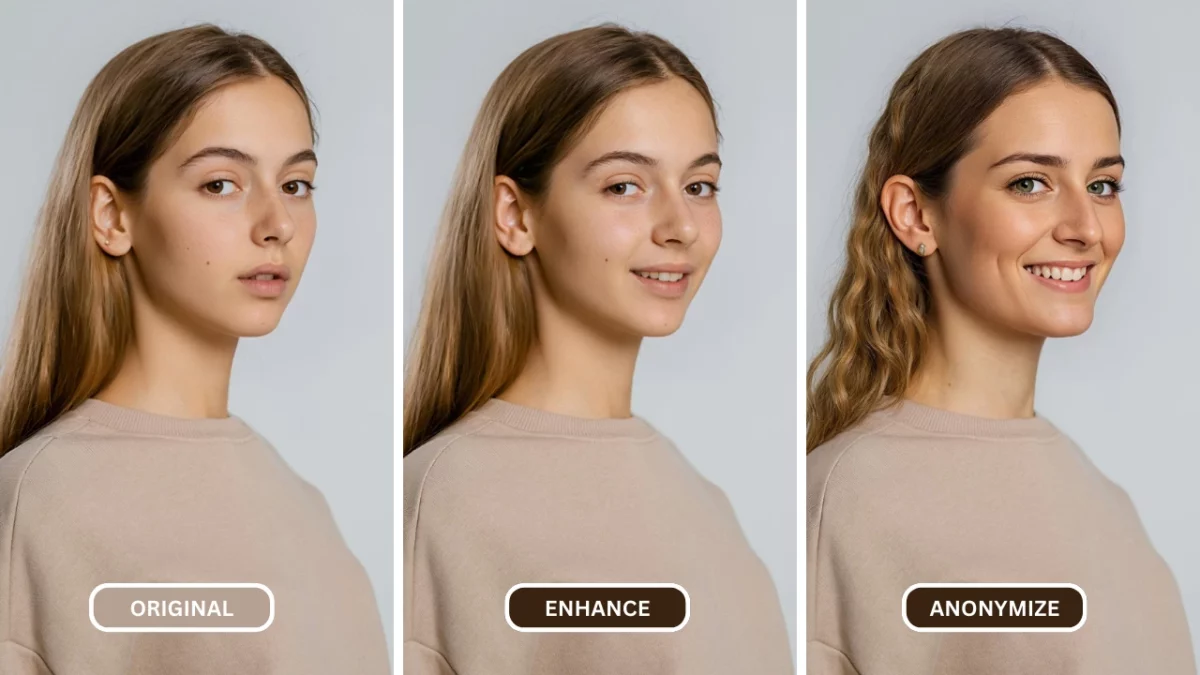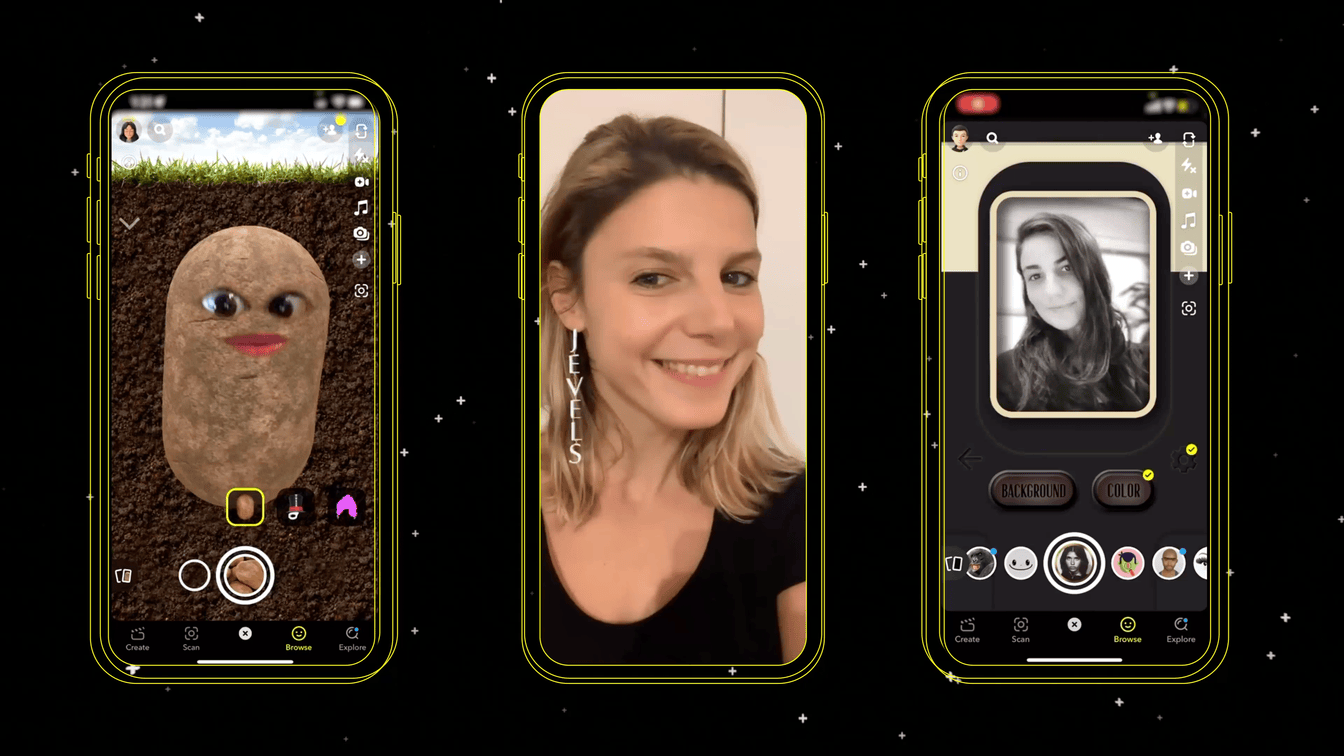Lesson 1: AI in Online Spaces – Profile Pics, Zoom & Filters
Lesson 1: AI in Online Spaces – Profile Pics, Zoom & Filters
"How AI Recognizes You Online (And How to Trick It)"
🔍 What’s the Problem?
AI doesn’t just recognize your face—it builds a digital profile based on your photos, video calls, and social media presence.
✔ AI tracks profile pictures across platforms, linking accounts even with different usernames.
✔ Zoom & video calls use AI-powered tracking to enhance and categorize faces.
✔ Filters & AR effects don’t just modify your look—they refine AI’s ability to recognize different expressions.
🔹 Why does this matter?
- Web3 Privacy Angle: Crypto KYC systems, exchanges, and decentralized identity tools use AI to match users across accounts.
- General Privacy Angle: Social media auto-tagging, people search tools, and deepfake detection can reduce anonymity.
💡 Good news: You don’t need to disappear—you just need to make AI tracking harder.
🤯 AI Privacy Fail Example
📌 An Anonymous User Was Tracked by Their Profile Picture
- A user changed their username but kept the same profile picture on two platforms.
- AI auto-tagging connected both accounts in seconds.
- Lesson? AI doesn't need your name—your face is enough.
Read more on: HOW POLICING AGENCIES USE AI
🛠 Tricks to Reduce AI Tracking in Online Spaces
1️⃣ Profile Pictures: Small Tweaks, Big Difference
✔ AI scans facial landmarks, background consistency & pose similarity across platforms.
✔ How to mess with it:
✅ Use slightly different lighting & angles across platforms to disrupt auto-matching.
✅ Avoid front-facing selfies—tilted, blurred, or side-profile shots work better.
✅ Try artistic edits (cartoon styles, high-contrast shadows) to break recognition.
✅ Use noise overlays or minor distortions in editing apps.
⚠️ What NOT to do:
❌ Using the exact same photo on Twitter, Telegram, and LinkedIn.
❌ Overusing B&W filters (AI still detects structure).
2️⃣ Zoom & Video Calls: Confuse AI in Real Time
✔ Real-time AI face tracking ensures constant identification.
✔ Background scanning helps AI auto-frame faces for machine learning.
✔ Consistent framing makes AI confident in tagging.
How to mess with it:
✅ Use blur filters or backlighting to create contrast issues for AI.
✅ Avoid perfectly still framing—head tilts, slight movement reduce accuracy.
✅ Try using a virtual background or subtle digital distortion.
⚠️ What NOT to do:
❌ Sitting in direct, well-lit, front-facing frames all the time.
❌ Overusing beauty filters (AI still maps your real face under them)
3️⃣ Filters & AR Effects: Playing with AI for Fun & Privacy
✔ Filters map your facial structure and store that data.
✔ AI learns to see through common effects over time.
✔ Even light face smoothing improves AI’s recognition capabilities.
✔ How to mess with it:
✅ Use multiple layers of filters—single distortions are easy to bypass, but stacked effects confuse AI.
✅ Try exaggerated filters (big eyes, stretched proportions, fake extra features).
✅ Use AR masks that add artificial shadows & fake depth.
⚠️ What NOT to do:
❌ Simple beauty filters—they enhance AI’s ability to track changes.
❌ Using consistent filters across all platforms—AI learns patterns.
🔗 Example: How Snapchat Filters Train AI to Detect Faces
👉 Snapchat & AI Face Mapping
🔥 AI Myths: Does This Work?
🚫 “A filter makes me unrecognizable.” ❌ Not really! AI can still detect your bone structure.
🚫 “Profile pictures aren’t used for tracking.” ❌ Wrong! AI auto-matching connects accounts instantly.
✅ “Changing angles, filters, and backgrounds confuses AI.” ✅ Yes! AI needs consistency to track people.
⚡ Quick Takeaways
✔ AI links profile pictures across platforms—changing them slightly helps.
✔ Video calls track faces in real time—movement & lighting tweaks help.
✔ Filters train AI, but stacking multiple effects can work against it.
✔ Small adjustments go a long way toward breaking automated face tracking.
🛠 Try This Experiment
📌 Upload a side-profile or stylized PFP on a new platform. Does AI still suggest friends from your other accounts?
📌 Use an AR filter and take a Zoom screenshot—does it still look like you?
💬 Share your findings in our students' TG chat https://t.me/+TdhG7t184BtiOGQy!
🎭 What’s Next?
👉 Lesson 2: AI & Faces – How Machines Recognize You (IRL & Online)
👁 Final Thought:
AI tracking is everywhere, but you don’t need to disappear—just make yourself harder to pin down. Adjusting your profile pictures, tweaking your video call setup, and playing with filters are small but effective ways to control how much AI really sees.
Let’s start messing with the algorithm.




